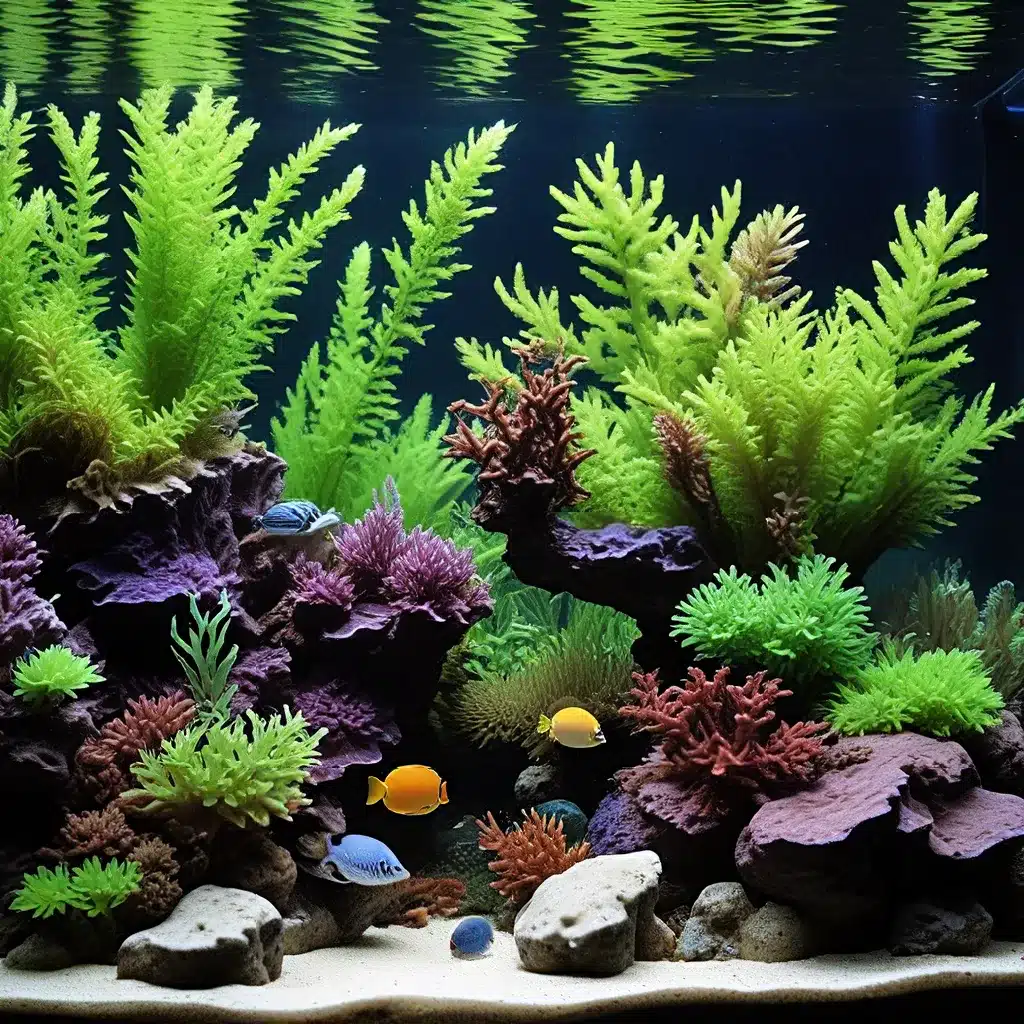
Maintaining a healthy and visually stunning marine aquarium is the ultimate goal for many seasoned aquarists. Whether you’re seeking to expand your existing setup or take your aquascaping skills to new heights, mastering the intricacies of marine tank care is a rewarding journey. In this comprehensive guide, we’ll delve into the strategies and techniques that can help experienced hobbyists create a thriving underwater oasis.
Understanding the Importance of Stability in Marine Aquariums
One of the fundamental principles of successful marine aquarium management is maintaining stability across key parameters. Sudden fluctuations in alkalinity, calcium, pH, salinity, or temperature can put significant stress on your corals and other marine life, making them more susceptible to disease and infection. As an experienced aquarist, it’s crucial to be diligent in regularly testing and monitoring these crucial water parameters.
Inaccurate test kits or stray electrical currents can also contribute to instability, leading to unexpected issues like Rapid Tissue Necrosis (RTN) in your SPS corals. RTN is a concerning phenomenon where coral tissue can rapidly deteriorate, often with no clear underlying cause. To minimize the risk of RTN, it’s essential to ensure your test kits are reliable and your equipment is functioning correctly. Additionally, incorporating a robust quarantine system for new corals can help prevent the introduction of potentially harmful pathogens.
Mastering Aquascaping Techniques for a Visually Stunning Reef
The art of aquascaping is paramount in creating a marine aquarium that is both visually stunning and biologically thriving. Experienced hobbyists often experiment with a variety of techniques to achieve their desired aesthetic, from strategic coral placement to the use of unique hardscaping elements.
One particularly effective approach is the coral grow-out tank, where you can cultivate and propagate your own corals before integrating them into your main display tank. This allows you to have greater control over the growth and health of your corals, as well as the overall composition of your aquascape. Careful planning and attention to detail are essential for successfully maintaining a coral grow-out system.
In addition to coral placement, the selection and arrangement of live rock and hardscaping can dramatically influence the visual appeal and functionality of your marine aquarium. Experienced aquarists often employ techniques like stacking, tiering, and scaping to create captivating, three-dimensional landscapes that mimic natural reef environments.
Optimizing Water Quality and Filtration for Long-Term Success
Maintaining optimal water quality is a crucial aspect of marine aquarium management, as it directly impacts the health and well-being of your inhabitants. Beyond the regular testing and monitoring of key parameters, experienced hobbyists often implement advanced filtration systems to ensure their water remains in pristine condition.
One such filtration technique that has gained popularity among seasoned aquarists is the use of protein skimmers. These devices, when properly sized and maintained, can effectively remove organic waste and dissolved organic compounds (DOCs) from the water column, helping to maintain a stable and balanced ecosystem. High-quality protein skimmers can be a game-changer for aquarists seeking to take their tank’s water quality to the next level.
In addition to protein skimmers, experienced hobbyists may also incorporate other filtration media, such as activated carbon and granular ferric oxide (GFO), to address specific water quality concerns. By understanding the unique needs of their marine inhabitants and the water parameters they require, aquarists can fine-tune their filtration system to create an optimal environment for their reef.
Navigating the Challenges of Marine Aquarium Maintenance
Despite the wealth of knowledge and experience that seasoned aquarists possess, the marine aquarium hobby is not without its challenges. Unexpected events, such as the aforementioned Rapid Tissue Necrosis (RTN), can occur even in well-established tanks, leaving aquarists perplexed and concerned about the potential for further damage.
In these instances, troubleshooting and a methodical approach to problem-solving are essential. Experienced hobbyists understand the value of patience, diligence, and a willingness to learn from both successes and failures. By carefully examining the potential causes, such as water parameter fluctuations, equipment malfunctions, or the introduction of new corals, aquarists can work towards identifying and addressing the root of the issue.
Furthermore, seasoned aquarists recognize the importance of maintaining a quarantine system for new livestock and corals. This proactive measure helps prevent the introduction of pests, pathogens, and other potential threats that could compromise the delicate balance of the main display tank.
Embracing the Rewarding Journey of Marine Aquarium Keeping
The marine aquarium hobby is a constantly evolving landscape, offering experienced hobbyists endless opportunities for exploration, experimentation, and personal growth. By embracing the principles of stability, aquascaping, and water quality management, aquarists can create breathtaking underwater ecosystems that captivate both themselves and their visitors.
Whether you’re seeking to push the boundaries of your current setup or embark on a new marine aquarium project, the rewards of this hobby are immense. From the vibrant colors and mesmerizing movements of corals to the graceful dance of schooling fish, a thriving marine aquarium is a true testament to the dedication and expertise of the aquarist.
By continuously learning, innovating, and adapting their techniques, experienced hobbyists can ensure that their marine aquarium remains a source of joy, inspiration, and a testament to their commitment to the underwater world.

